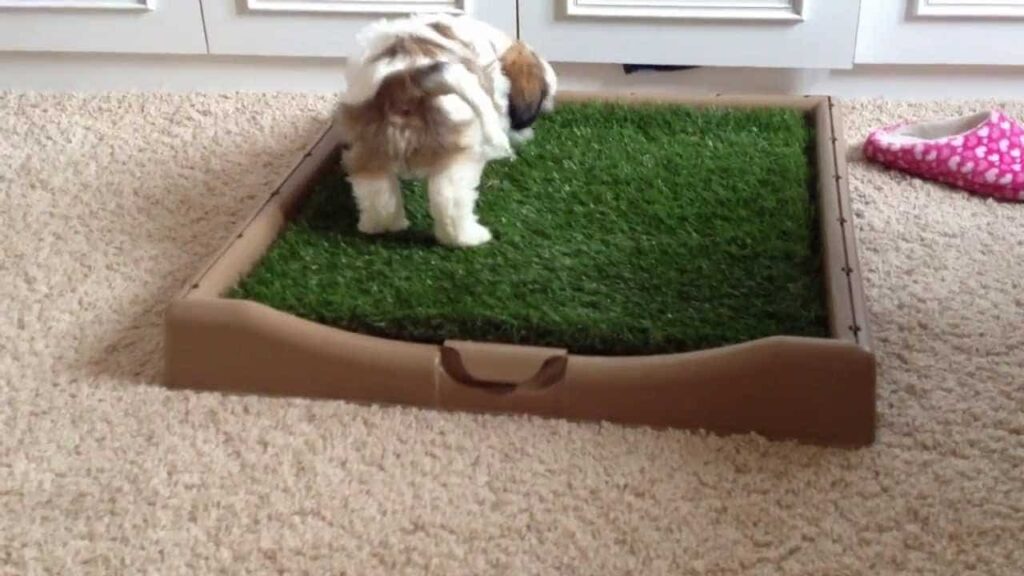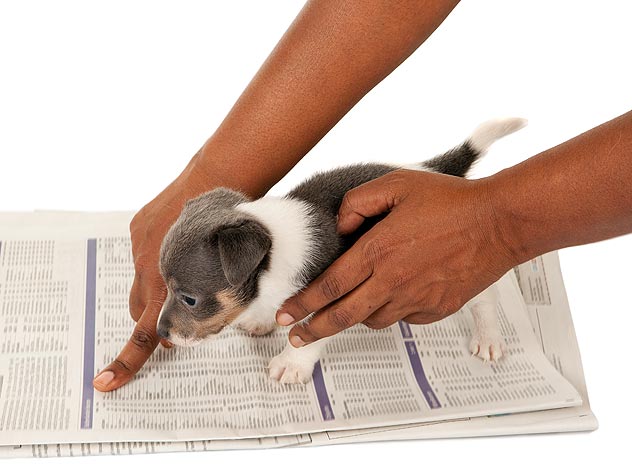Providing a litter box to your dog is one of the best ways of eliminating ‘accidents’ in your home as it allows your canine friend to go to the bathroom any time of the day and night as needed. It also convenient for dog owners, too. If you live in an apartment setting or you don’t have the luxury of a fenced yard where your pup can poop freely, having a litter box can save you from inconvenient trips outside. And even if you have a backyard, you may still need to collect your pup’s landmines every time you walk through the yard. Litter boxes also provide simpler solutions for dog owners with limited mobility who may find it a bit hard to take their dogs outside to potty. Clearly, there are plenty of benefits of training your dog to use a litter box.
Despite all these benefits, many dogs rarely use litter boxes effectively. You only need to show a cat where the litter box is once and he will be good to go. On the other hand, it can be hard to train a dog to use a litter box. Teaching a dog how to use a litter box usually takes a lot of time, repetition, and positive reinforcement.
But why don’t dogs use litter boxes? Well, there is no scientifically-proven reason why dogs don’t like to use litter boxes. However, the following are some suggestions that may give you a hint:
- Dogs don’t have the natural impulse to bury their waste. Litter boxes tend to fill cats’ natural instincts and need to bury waste to hide their scents from enemies and prey. However, dogs hunt in packs, so they don’t rely much on stealth to catch their prey. As a result, dogs don’t have the natural impulse to bury their waste and ultimately have very little to build on when you try to introduce them using litter boxes.
- Instead of burying their poops, dogs prefer to mark out their territories. For dogs, therefore, leaving out scent has more value than covering it. Some dogs might kick some dirt or grass to cover their poop, but they care more about their scents remaining there.
- Size issues: Litter boxes work well for toy breeds only. Larger dogs don’t like litter boxes because the boxes are not spacious enough to accommodate their big bodies. Bigger dogs also eliminate more waste, which may overwhelm the capacity of these boxes, especially when a dog is left alone for extended periods.
Tips to Make Your Dog Use A Litter Box

So, how do you convince your pup to use a litter box when he wants to eliminate? It might take some dogs several months to effectively use a litter box, but they will eventually grasp the process, especially if you leverage a few strategies:
- Choose a litter box with high sides: If you have a male dog, opt for litter boxes with high sides because there’s likely to be some leg lifting when it is time to pee. A litter box without an appropriate height may encourage a mess in your home.
- For a toy breed, choose a litter box with a dip on one side as well for easy climbing in and out.
- If your pup is used to eliminating on pee pads, consider moving it into the litter box.
- Add sod in the box because grass is always a proffered substrate for most dogs. Just remember to replace it periodically. Check this post for the best artificial grass you can use.
- To jumpstart the training, consider spraying the litter box with a potty training spray or putting a paper towel soaked with your dog’s urine in the box. This will entice your dog to use the litter box.
Related Post: 7 Best Potty Training Sprays for Dogs
- Take your dog to the litter box whenever he shows signs of needing to eliminate. These may include circling, sniffing the ground, hiding under furniture, etc. If an ‘accident’ happens before you manage to take him to the litter box, don’t punish him. Just keep up with training as he will master the process soon. Learn more here: How To Potty Train a Puppy to Go Outside in 7 Easy Steps
- Keep the litter box clean. After your dog has finished doing his business, scoop the litter and dispose of accordingly. Clean the box with soap and water once in a while and replace the litter at least twice a month.
Related Posts:
12 Best Self Bagging Pooper Scooper to Buy for Your Dog
10 Best Biodegradable Dog Poop Bags
- Some dogs tend to be picky, so try different litter substrates (wood chip, crystals, pellets, etc) until you find one that your pup is comfortable with.
- Don’t forget to praise your dog when he eliminates in the right spot—in the litter box.
The Bottom-line
While dogs don’t adapt fast to using litter boxes as cats, if you are patient and dedicated, you can get your pup to master using these convenient dog potty tools. And the rewards of successful litter box training can be great. It will save you a lot of time that you would have otherwise spent taking your dog outside and waiting for him to poop.
Related Post: 10 Best Dog Breeds for Litter Box Training
Image sources: 1
As an Amazon Associate, we may receive a small commission from qualifying purchases but at no extra cost to you. Learn more. Amazon and the Amazon logo are trademarks of Amazon.com, Inc, or its affiliates.

